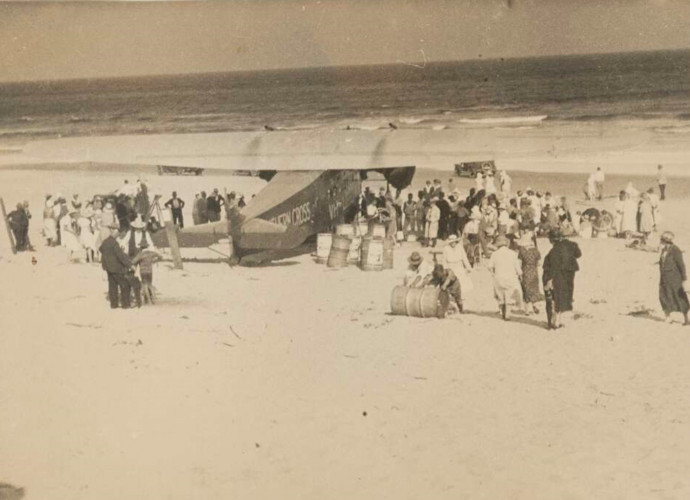South Coast NSW History Story
GERROA
Gerroa is at the northern end of Seven Mile Beach. It was the home of the Wadi Wadi Aboriginal tribe that spoke the Dharawal language.
In 1833 William Bland was granted 917 acres of land that included the prominent Black Head point. (He later owned a property in Macquarie Street, Sydney, that is now the headquarters of the Royal Australian Historical Society.) In February 1842 another 2,500 acres called ‘Burke’s Farm’ was granted to Alexander Berry. It became part of his Coolangatta Estate. Later that same year James McBrien surveyed the land surrounding ‘Long Nose Point’ (now Black Head Point) on the instructions of Governor Brisbane.
By the 1860s, the northern end of Seven Mile Beach had become a popular horse racing venue. At low tide, the sand was hard and the beach was usually flat. Later car and motor cycle races were held in the same area and, in the 1920s and 1930s Seven Mile Beach became known as the ‘Gerringong Speedway’.
In May 1925 the Daily Telegraph reported that the Royal Automobile Club of Australia had held its inaugural beach motor racing event at Gerringong. However, ‘It was by no means an auspicious beginning, as the rain had made conditions anything but pleasant…many a car became bogged in the sand on the way to the racing track, while the roads leading down to the beach were so treacherous that at least 20 cars had to be abandoned for the night on the hillside.’
Several months later, the Gerringong Council ‘took exception’ to the Royal Automobile Club holding contests on the beach on a Sunday. ‘In view of the council’s resolution not to permit Sunday racing, the club is to be advised to arrange such fixtures for Saturdays.’
When the Daily Guardian offered a £50 trophy for the first person in Australia to exceed 100 mph over a mile, Don Harkness (an automotive designer, driver and engineer) built a new car powered by a Hispano Suiza aircraft engine and set the record of 108 mph (170 km/h) at Gerringong Speedway on 7th October 1925. An estimated 2,000 people cheered him along.
On 11th January 1933, Charles Kingsford Smith took off from Seven Mile Beach on the first commercial flight to New Zealand. His journey in the Southern Cross took 14 hours 10 minutes to reach New Plymouth in New Zealand. Although he departed at 2.50 am, several hundred visitors and local residents turned out to witness the start of this historic flight.
Kingsford Smith returned to Seven Mile Beach in November 1933 to give joy flights (and raise money). In April 1934 he again visited the beach…but on an emergency landing!
In mid-1933, a Post Office was opened in Gerroa and the name of the locality and town was changed from Crooked River to Gerroa, a derivation of the Aboriginal word ‘Jerrawa’ meaning ‘the place of many birds’.
In 1935 parts of ‘Burke’s Farm’ was subdivided into town blocks. The local Council supported this by constructing roads, bridges and camping facilities in the surrounding area. Then, in 1941, James Emery’s adjoining ‘Riversleigh’ farm was developed into town blocks.
The town then developed into a popular residential and tourist destination. Interestingly, the Jesuits built a retreat at Gerroa in 1957 and, for a period, a number of other Christian organisations also had retreat facilities in the town.
Seven Mile Beach and adjacent lands were gazetted as a National Park in 1971.
Today the town remans a popular destination for holiday makers and retirees.
Image: Seven Mile Beach, Gerroa, c.11th January 1933. nla.obj-147706380-1
